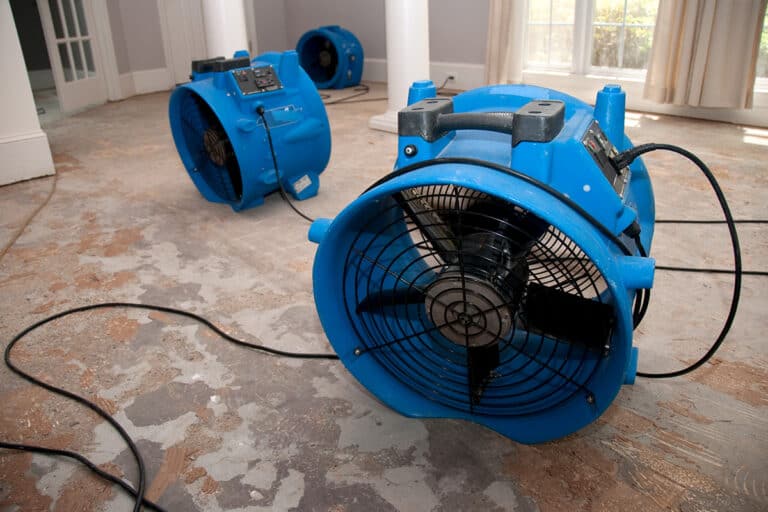Disclosure: I am compensated for purchases made through some links on this site. Click for details.
As temperatures drop during the colder months, homeowners with sump pumps must be vigilant to ensure their system remains fully operational. One common issue that can arise is the freezing of the sump pump discharge line, which can lead to a blocked line, water damage, and pump failure. Fortunately, with some proactive measures, it’s possible to greatly reduce the risk of your sump pump line freezing.
Understanding the causes of freeze-ups in sump pump lines is key to prevention. Generally, a discharge line freezes when water trapped inside is exposed to sub-freezing temperatures. The risk is higher when the line is not properly insulated, if it’s positioned incorrectly, or if the surrounding air is exceedingly cold for prolonged periods. By adopting certain maintenance and preparation tips, homeowners can mitigate the chances of freeze-related problems.
Keeping an eye on your sump pump’s performance during winter can help you act swiftly if an issue arises. Should the discharge line freeze, there are emergency measures that can be implemented to thaw it safely and restore proper drainage. With these strategies in place, homeowners can feel more secure in their sump pump’s ability to function efficiently all winter long.
Key Takeaways
- Proper insulation and positioning of the sump pump line are essential to prevent freezing.
- Regular maintenance and monitoring are vital for sump pump efficiency during winter.
- Emergency thawing techniques are available to address freezing issues promptly.
Understanding Sump Pumps and Freezing Risks
Protecting a sump pump system from freezing is essential for maintaining a dry basement and preserving the integrity of a home’s foundation. Freezing temperatures pose significant risks to proper sump pump operation and can lead to costly damages if not addressed.
Components of a Sump Pump System
A sump pump system primarily consists of a sump pit, a pump, a float switch, and a discharge line. The sump pit collects excess water that accumulates beneath a basement or crawlspace. The pump, activated by a float switch, moves this water out of the pit through the discharge line. Each part must remain in good working order to prevent basement flooding and foundation damage.
How Freezing Affects Sump Pumps
When temperatures drop, the risk of the discharge line, which expels water away from the property, becoming frozen increases. A frozen sump pump or discharge pipe can cause water to back up, potentially leading to an overflow of the sump pit and subsequent flooding. To mitigate these risks, it is crucial to ensure that water within the sump pump system is not allowed to remain stagnant and freeze, as moving water is less likely to freeze.
Preventive Measures for Sump Pump Lines
Preventive measures for sump pump lines are essential to ensure they function correctly year-round. These steps typically include proper insulation of the discharge line and enhancements to the water flow to prevent ice formation.
Insulating the Discharge Line
Discharge lines are prone to freezing in low temperatures if not adequately insulated. To protect the discharge pipe from freezing temperatures, homeowners can wrap the line with insulation materials like foam tubing. Furthermore, implementing a freeze-resistant hose can significantly reduce the risk of freezing during winter months.
Improving Water Flow to Prevent Ice Formation
Maintaining a consistent water flow is crucial in preventing ice blockages in sump pump lines. Regular maintenance of the pump and discharge line is required to prevent build-up that can slow water flow. Ensuring proper slope and gravity assistance for the discharge hose helps prevent water from settling and freezing, thus maintaining a steady flow.
Sump Pump Maintenance Recommendations
Proper maintenance of a sump pump is crucial for homeowners to prevent potential damage and costly repairs. Regular maintenance and timely attention to issues can greatly enhance the longevity and performance of your sump pump.
Routine Inspection and Upkeep
Homeowners need to perform regular maintenance to ensure their sump pump operates effectively. This includes:
- Visually check the pump, valves, and discharge lines at least once a quarter for any signs of wear or damage.
- Testing the pump by pouring water into the pit to make sure it starts and stops as it should.
- Cleaning the sump pit from debris that could impede the pump’s function.
Recognizing and Addressing Issues Promptly
The necessity of prompt actions can’t be overstated; homeowners should:
- Be vigilant for any unusual noises or vibrations which might indicate a problem.
- Check for frozen lines during cold weather, following recommendations to prevent a frozen sump pump discharge line when temperatures drop.
- Address issues as soon as they’re identified to avoid further damage.
Practical Tips for Freezing Prevention
As winter approaches, homeowners face the challenge of keeping their sump pump lines free from ice blockages. To protect your home against water damage from a frozen discharge line, consider these practical, targeted strategies.
Effective Use of Heat Sources
To prevent your discharge line from freezing, the application of heat is essential. Heat tape can be applied directly to the pipe, providing consistent warmth during cold spells. For acute situations, a heat gun may be used to carefully thaw a frozen line, but with caution to avoid pipe damage. Additionally, placing a portable heater near the discharge area can provide ambient warmth to deter freezing.
Proper Installation to Mitigate Freezing
The key to a well-functioning sump pump system during frosty weather lies in the initial installation. Ensuring that your discharge pipe is properly sloped allows water to drain more efficiently, leaving less chance for water to remain and freeze. Incorporate freeze guards into your system to allow water to exit even if ice forms. To further protect against basement flooding, consider a discharge line heater specifically designed for sump pump systems, which can provide constant protection against freezing temperatures.
Emergency Measures for Frozen Sump Pump Lines
When a sump pump line freezes, it’s imperative to act quickly to prevent basement flooding and potential water damage. Proper thawing techniques can restore function before pipes burst, while professional help may be necessary when DIY methods fail or risk overheating the system.
Thawing Techniques
In the event of frozen pipes, homeowners can employ several methods to safely thaw them. A common household hairdryer can be used to apply gentle heat to the frozen section of the discharge line, moving the dryer back and forth to avoid concentrating heat in one spot. If accessible, pouring boiling water along the pipe slowly can expedite the thawing process, although it should be done cautiously to prevent any risk of cracking the pipe due to thermal shock.
Seeking Professional Help
Should these DIY methods prove insufficient, or if there’s a significant risk of causing further damage, one should consider seeking the aid of a professional plumber. Experts in plumbing have the appropriate tools and experience to handle severe cases of freezing without causing damage. Additionally, restoration services may be necessary if water damage restoration is required due to flooding caused by a backup when the sump pump line was frozen.
Seasonal Considerations for Sump Pump Care
Proper maintenance of a sump pump is critical to ensure its efficiency, especially when transitioning between seasons. The following subsections focus on preparing for winter’s low temperatures and the shift to warmer weather in spring, addressing the unique challenges each period presents for sump pump operation.
Winter Preparations
To prevent freezing in colder climates, homeowners should insulate the discharge line of their sump pump. During the winter months, snow and ice can cause blockages, leading to potential backups. Steps include insulating pipes with foam covers and using a freeze-resistant discharge hose to minimize the risk of ice formation within the system.
Transitioning to Warmer Weather
As spring arrives, increased temperatures can lead to melted snow and excessive rain, putting additional stress on the sump pump. It is advisable to inspect and clean the sump pit before spring to ensure proper function and to prepare for potentially higher operating volumes. Additionally, homeowners should check for any wear and tear that may have occurred during the winter and address it promptly to prevent malfunctions.
Conclusion
The winter months pose a significant challenge to maintaining a functional sump pump system, with the risk of freezing lines at the forefront of potential issues. However, by understanding the components of a sump pump system, recognizing the risks associated with freezing temperatures, and implementing the preventative measures discussed, homeowners can ensure their system remains effective even in the coldest conditions.
From insulating the discharge line to ensuring proper water flow and regular maintenance checks, each step plays a crucial role in safeguarding your home from water damage and the complications of a frozen sump pump line.
Moreover, the readiness to apply emergency thawing techniques and the wisdom to seek professional help when necessary further protect your home from potential flooding.
As we navigate through winter, let’s remember that the key to a well-functioning sump pump system lies in preparation, routine care, and prompt action in the face of adverse weather conditions. By taking these proactive steps, homeowners can enjoy peace of mind, knowing their homes are well-protected against the elements, ensuring a dry and secure basement all year round.




